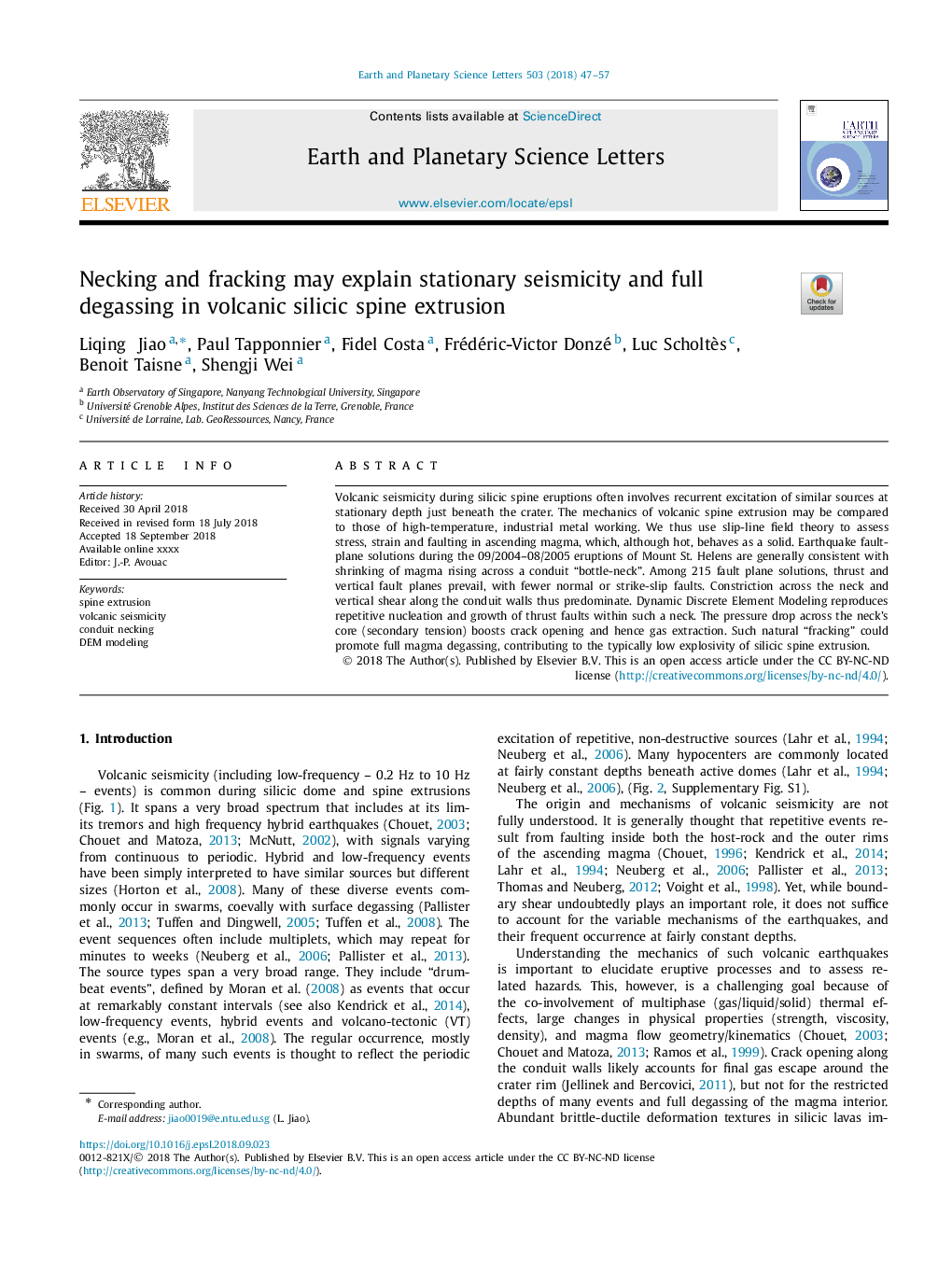| Article ID | Journal | Published Year | Pages | File Type |
|---|---|---|---|---|
| 11024686 | Earth and Planetary Science Letters | 2018 | 11 Pages |
Abstract
Volcanic seismicity during silicic spine eruptions often involves recurrent excitation of similar sources at stationary depth just beneath the crater. The mechanics of volcanic spine extrusion may be compared to those of high-temperature, industrial metal working. We thus use slip-line field theory to assess stress, strain and faulting in ascending magma, which, although hot, behaves as a solid. Earthquake fault-plane solutions during the 09/2004-08/2005 eruptions of Mount St. Helens are generally consistent with shrinking of magma rising across a conduit “bottle-neck”. Among 215 fault plane solutions, thrust and vertical fault planes prevail, with fewer normal or strike-slip faults. Constriction across the neck and vertical shear along the conduit walls thus predominate. Dynamic Discrete Element Modeling reproduces repetitive nucleation and growth of thrust faults within such a neck. The pressure drop across the neck's core (secondary tension) boosts crack opening and hence gas extraction. Such natural “fracking” could promote full magma degassing, contributing to the typically low explosivity of silicic spine extrusion.
Keywords
Related Topics
Physical Sciences and Engineering
Earth and Planetary Sciences
Earth and Planetary Sciences (General)
Authors
Liqing Jiao, Paul Tapponnier, Fidel Costa, Frédéric-Victor Donzé, Luc Scholtès, Benoit Taisne, Shengji Wei,
